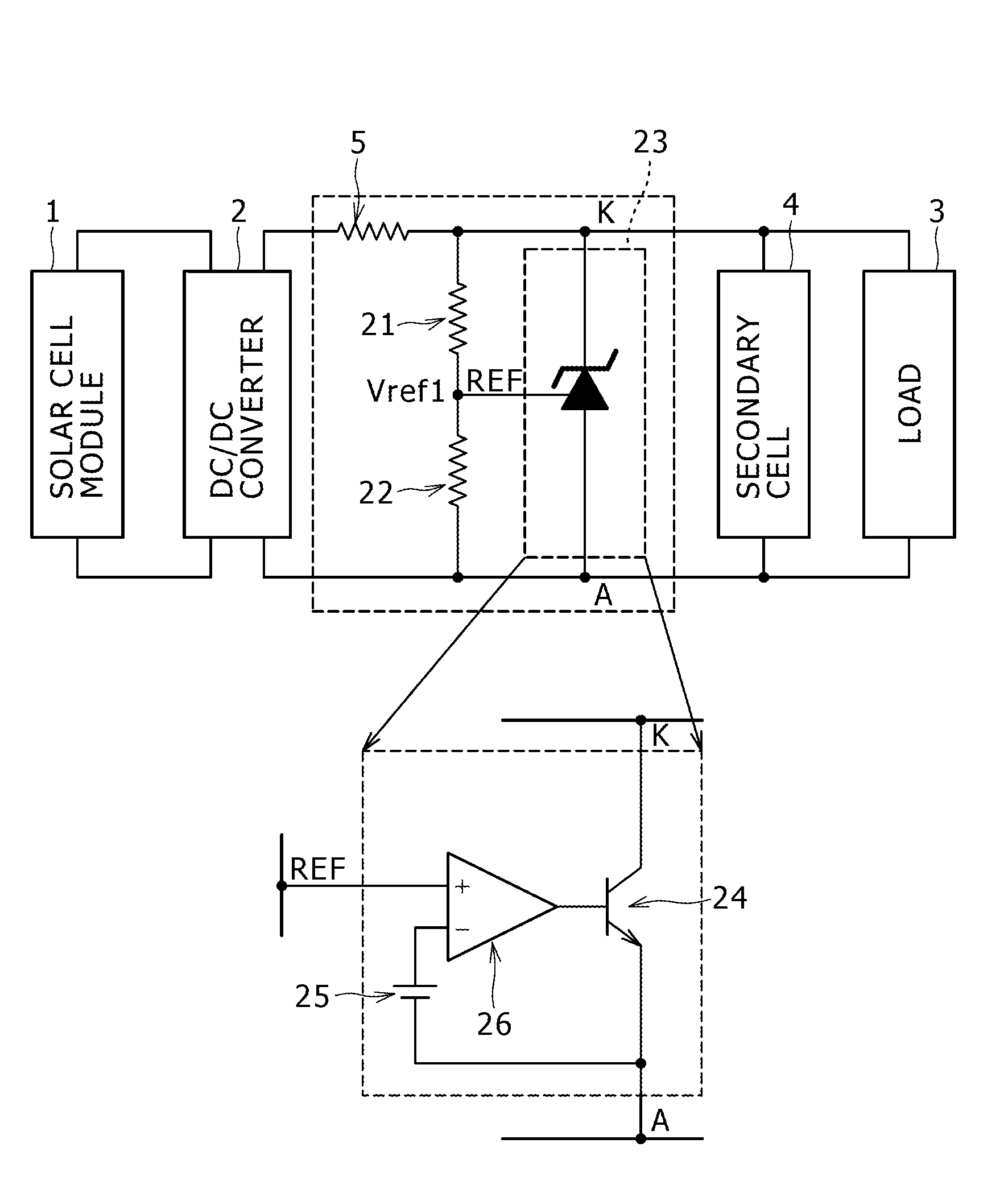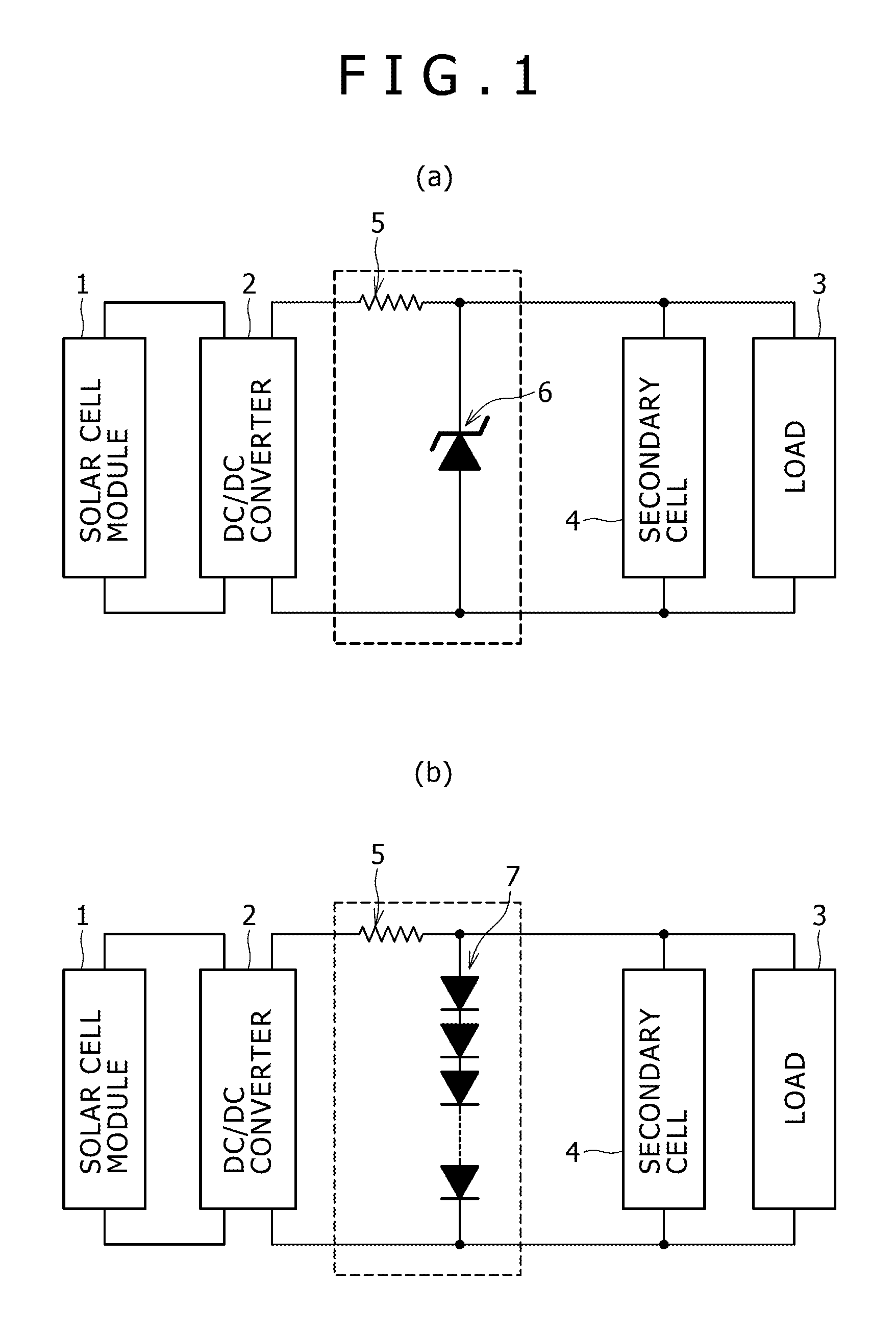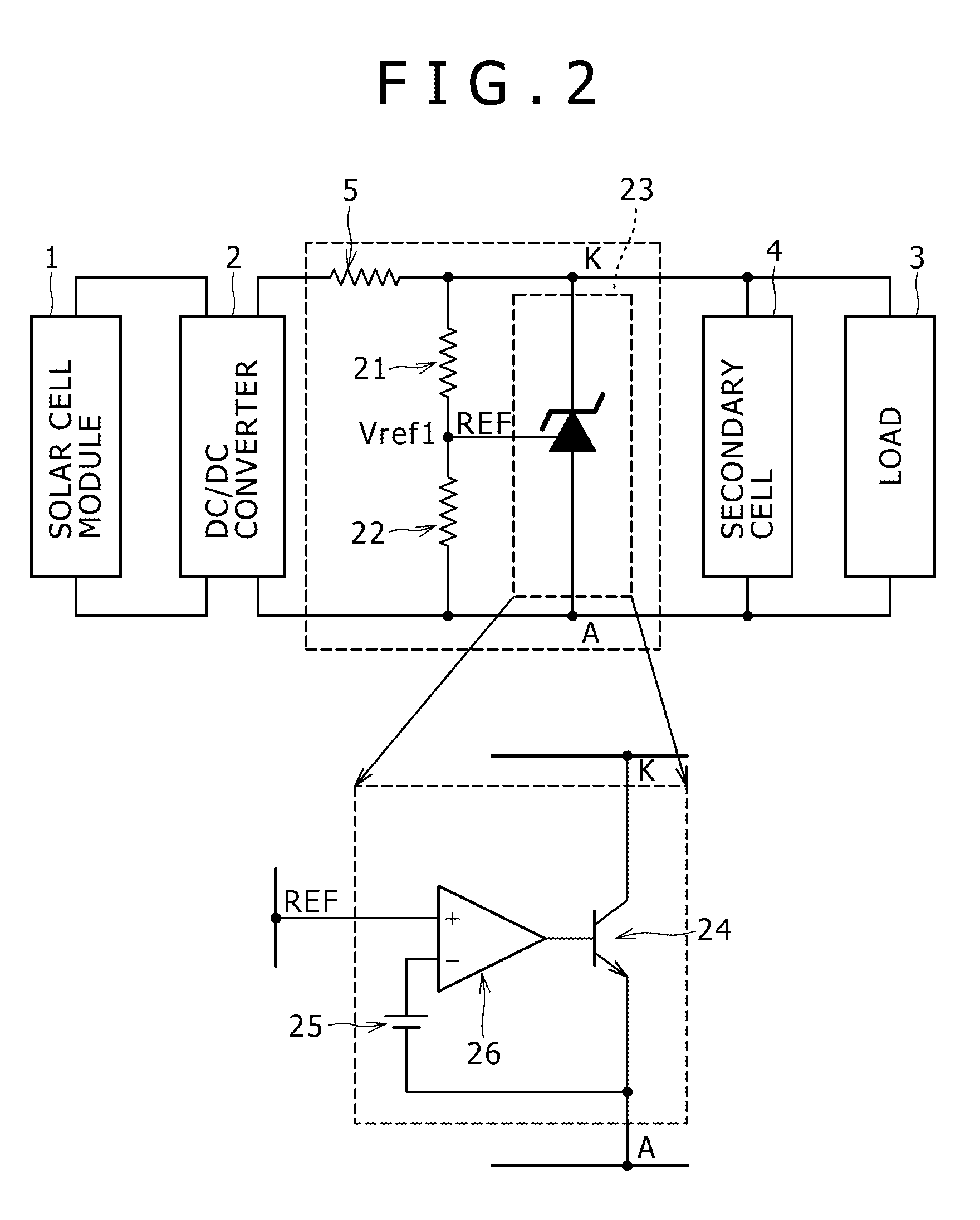Hybrid power source system
a power source system and hybrid technology, applied in the direction of electrochemical generators, greenhouse gas reduction, transportation and packaging, etc., can solve the problem of too high temperature of solar cells b>101/b>, achieve high energy efficiency, effectively utilize, and minimize the size of solar cells or fuel cells
- Summary
- Abstract
- Description
- Claims
- Application Information
AI Technical Summary
Benefits of technology
Problems solved by technology
Method used
Image
Examples
embodiment 1
[0065]In Embodiment 1, an example of a hybrid power source system described in claims 1, 2, 4, and 5 will be mainly described.
[0066]FIG. 1(a) is a schematic diagram showing a configuration of a hybrid power source system 10 based on Embodiment 1. The hybrid power source system 10 is composed of a solar cell module 1, a DC / DC converter 2 as the direct-current voltage converting means described above, a secondary cell 4, a resistor 5, and a constant voltage diode 6, and the solar cell module 1 is connected to an input side of the DC / DC converter 2 and a load 3 and the secondary cell 4 are connected in parallel with each other on an output side of the DC / DC converter 2.
[0067]In the hybrid power source system 10, after an electric power which the solar cell module 1 generates is converted into a suitable voltage by the DC / DC converter 2, the resulting suitable voltage is supplied to the load 3 and the secondary cell 4. Also, when the generated electric power exceeds an electric power wi...
embodiment 2
[0076]In Embodiment 2, an example of a hybrid power source system described in claims 6 and 7 will be mainly described.
[0077]FIG. 2 is a schematic diagram showing a configuration of a hybrid power source system 20 based on Embodiment 2. The hybrid power source system 20 is composed of a solar cell module 1, a DC / DC converter 2 as the direct-current voltage converting means described above, a secondary cell 4, a resistor 5, division resistors 21 and 22, and a shunt regulator circuit 23. In the hybrid power source system 20, the shunt regulator circuit 23 is used as the shunt circuit described above instead of the constant voltage diode 6, and the division resistors 21 and 22 are provided. Since portions other than those are the same as those in the hybrid power source system 10, points of difference will be mainly described.
[0078]The shunt regulator circuit 23, as shown in an enlarged diagram, is composed of a shunt path composed of a transistor 24 connected in parallel with the seco...
embodiment 3
[0086]In Embodiment 3, an example of a hybrid power source system described in claim 3 will be mainly described.
[0087]FIG. 3(a) is a schematic diagram showing a configuration of a hybrid power source system 30 based on Embodiment 3 of the present invention. The hybrid power source system 30 is composed of a solar cell module 1, a DC / DC converter 31 as the direct-current voltage converting means described above, a secondary cell 4, division resistors 21 and 22, and a shunt regulator circuit 23. In the hybrid power source system 30, the DC / DC converter 31 is used instead of the DC / DC converter 2 used in each of the hybrid power source systems 10 and 20, and the resistor 5 is omitted. Since portions other than those are the same as those in the hybrid power source system 20, points of difference will be mainly described.
[0088]As previously stated, the output voltage from the DC / DC converter 2 is set slightly higher than the voltage of the secondary cell 4. In this case, although some c...
PUM
| Property | Measurement | Unit |
|---|---|---|
| temperatures | aaaaa | aaaaa |
| charging voltage | aaaaa | aaaaa |
| charging voltage | aaaaa | aaaaa |
Abstract
Description
Claims
Application Information
 Login to view more
Login to view more - R&D Engineer
- R&D Manager
- IP Professional
- Industry Leading Data Capabilities
- Powerful AI technology
- Patent DNA Extraction
Browse by: Latest US Patents, China's latest patents, Technical Efficacy Thesaurus, Application Domain, Technology Topic.
© 2024 PatSnap. All rights reserved.Legal|Privacy policy|Modern Slavery Act Transparency Statement|Sitemap



